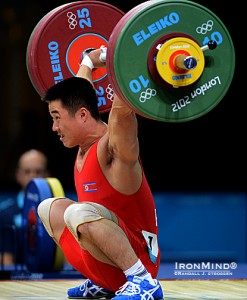A wide range of interesting things have popped up in health-and-fitness news. You should know about this stuff!
Cooked Food Grows the Brain:
“If you eat only raw food, there are not enough hours in the day to get enough calories to build such a large brain. We can afford more neurons, thanks to cooking.”
– Dr. Suzana Herculano-Houzel, neuroscientist, Federal University of Rio de Janeiro in Brazil
The human brain has far more neurons than our primate relatives such as apes and chimps. Relative to our body weight, we carry far more brain mass than our ape relatives, and we use far more energy to run our neurology than apes. Why? And how have we managed to acquire all the energy to manage this process over the past several hundred thousand years? It seems that the answers lie in humans cooking their food. An article from the Guardian titled Invention of cooking made having a bigger brain an asset for humans discusses the issue further. The article is informed by a study from the Proceeding of the National Academy of Sciences of the United States of America.
High-Carb Diets May Contribute to Alzheimer’s:
“Older people who load up their plates with carbohydrates have nearly four times the risk of developing mild cognitive impairment, a study out Tuesday finds.”
– USA Today
There’s more news regarding food and neurological function. USA Today reports on a recent study in the Journal of Alzheimer’s Disease indicates that a high-carbohydrate diet (as is suggested by the FDA) may contribute to early-onset dementia. Medline also reported on the study saying:
“Those who reported the highest carbohydrate intake were 1.9 times more likely to develop mild cognitive impairment than those with the lowest carbohydrate intake. Those with the highest sugar intake were 1.5 times more likely to develop mild cognitive impairment than those with the lowest intake.
Those whose diets had the highest levels of fat and protein were 42 percent and 21 percent less likely, respectively, to develop mild cognitive impairment than those with the lowest intake of fat and protein.”
The Medline report also makes the following important observation saying, “While the researchers found an association between sugar-laden, high-carb diets and mental decline, they did not establish a cause-and-effect relationship.”
I personally have lost weight by cutting carbs–particularly processed carbs such as cereal, bread, crackers, tortillas, muffins, etc–and replacing those calories with fibrous vegetables, fat and protein. I’ve become convinced that an FDA-type high-carb diet is probably not the ideal way to eat for most people.
Lifting Weights Helps the Brain:
“Where previously we had seen positive associations between aerobic activity, particularly walking, and cognitive health, these latest studies show that resistance training is emerging as particularly valuable for older adults,”
– Dr. William Thies, chief medical and scientific officer of the Alzheimer’s Association
Of course I love any evidence that suggests lifting weights is good for you. I have particular interest in evidence that weights help us beyond simply building muscle and bone mass. Mind Your Reps: Exercise, Especially Weight Lifting, Helps Keep the Brain Sharp comes from Time. The article reports on four studies presented at the Alzheimer’s Association International Conference in Vancouver.
I’d like to know what loads are best used in preventing Alzheimer’s. Does any type of strength training prevent Alzheimers or are certain exercises better than others? What’s the minimal effective dose to derive the benefits? I hope someone is looking into these questions.
Lifting Weights Protects Against Metabolic Syndrome:
“Research has linked greater muscle strength and muscle mass to lower rates of metabolic syndrome. Since lifting weights increases muscle strength and mass, it might also help to decrease the development of metabolic syndrome.”
– Sciencedaily.com
Such a wonderful thing this weight training! Science Daily discusses research by the National Strength & Conditioning Association that indicates lifting weights protects against metabolic syndrome. What is metabolic syndrome? The article says:
“Metabolic syndrome is a cluster of risk factors linked to increased rates risk of cardiovascular disease and diabetes. People with at least three out of five risk factors — large waist circumference (more than 40 inches for men and 35 inches for women), high triglyceride levels, reduced levels of high-density lipoprotein cholesterol (HDL, or “good” cholesterol), elevated blood pressure, and high glucose levels — are considered to have metabolic syndrome.”
The proof keeps on stacking up. Lifting weights is a staple of healthy living. Are you currently on a strength training program? If not, why?
Lactose Tolerance & Evolution:
“Everywhere that agriculture and civilization went, lactose tolerance came along. Agriculture-plus-dairying became the backbone of Western civilization.”
– Slate
Humans are the only animals that consume milk beyond the age of infancy. (Not all humans actually. Two-thirds of us are lactose intolerant. Still, there are a lot more humans that drink milk in their adulthood compared to other mammals.) Why is this? What makes so many of us so different from other mammals? Are there advantages to lactose tolerance? The Most Spectacular Mutation in Recent Human History is from Slate Magazine. The article discusses the speed with which this genetic mutation spread and possible theories on why it ever happened at all. There are no solid answers to the questions here, but it seems that in much of the world, civilization and lactose tolerance have gone hand-in-hand:
“The plot is still fuzzy, but we know a few things: The rise of civilization coincided with a strange twist in our evolutionary history. We became, in the coinage of one paleoanthropologist, ‘mampires’ who feed on the fluids of other animals. Western civilization, which is twinned with agriculture, seems to have required milk to begin functioning.”
There clearly seem to be some advantages to a lot of people in consuming milk and/or other dairy products. There also appear to be some real disadvantages. Read the New York Times article Got Milk? You Don’t Need It for another view of milk consumption. The article states:
“Osteoporosis? You don’t need milk, or large amounts of calcium, for bone integrity. In fact, the rate of fractures is highest in milk-drinking countries, and it turns out that the keys to bone strength are lifelong exercise and vitamin D, which you can get from sunshine. Most humans never tasted fresh milk from any source other than their mother for almost all of human history, and fresh cow’s milk could not be routinely available to urbanites without industrial production. The federal government not only supports the milk industry by spending more money on dairy than any other item in the school lunch program, but by contributing free propaganda as well as subsidies amounting to well over $4 billion in the last 10 years.”
I think the Times article raises some valid points. Clearly many of our fellow humans do fine without consuming milk as adults. The FDA guidelines insisting that we drink milk are a bit bogus, and completely influenced by the dairy industry. However, in lactose tolerant adults, I’m not sure milk is a bad thing. I haven’t been completely convinced one way or the other. I drink milk sometimes but not often. More often I consume cheese and yogurt which are fermented versions of milk.
Make a Fist to Perform Better:
“Athletes who made a fist with their left hand did better under pressure than when they made a fist with their right hand…”
– “Preventing Motor Skill Failure Through Hemisphere-Specific Priming: Cases From Choking Under Pressure,” Journal of Experimental Psychology
I find this article from the Atlantic enormously interesting. The results are in the quote above. In this study, right-handed athletes (Righties only were tested.) performed better when they made a fist in the left hand. What’s going on here? The article states:
“According to the researchers, freaking out is primarily associated with the left hemisphere of the brain, while the right hemisphere deals more with mechanical actions. Meanwhile the cortex of the right hemisphere controls movements of the left side of the body, and the left hemisphere controls the right side of the body. So they figured that if you can purposely activate the right hemisphere — in this case, by making a fist or squeezing a ball with your left hand — it will improve physical performance and draw focus away from the ruminating left hemisphere.”
Interestingly, anyone who’s learned the RKC Hard Style of pressing has learned to make a fist in the opposite non-pressing hand. The effect is powerful. You get stronger when you do this! Maybe this study indicates why.



